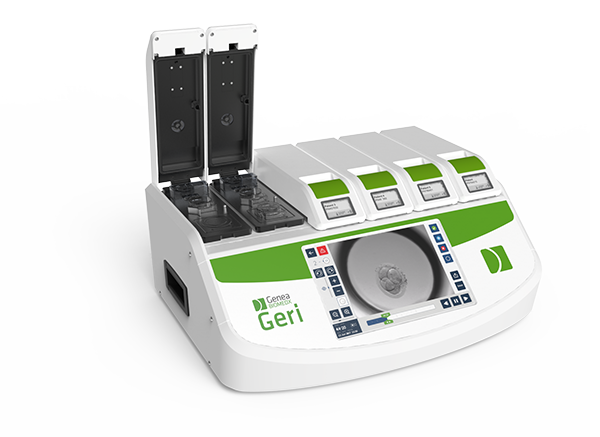Unique tracking system for embryos at KrishnaIVF clinic
Why embryo tracking matters
Optimal outcomes in In Vitro Fertilisation (IVF) are achieved by selecting the most viable embryos within a highly controlled laboratory environment. The implementation of time-lapse embryo monitoring allows for continuous observation of embryonic development without requiring embryo removal from the incubator, thereby reducing environmental disturbances that may impact viability.
At Krishna IVF Clinic, our advanced tracking system integrates time-lapse imaging technology, comprehensive developmental analysis, and rigorously standardised laboratory protocols. This systematic approach not only enhances the precision of embryo selection and ensures safe handling, but also facilitates ongoing, transparent communication with patients. Consequently, patients benefit from a greater understanding of the selection process, which has the potential to reduce anxiety and foster greater trust in the overall IVF treatment experience.
What is time-lapse monitoring? Time-lapse systems are a new technology for tracking embryos.
Time-lapse systems are specialised incubators equipped with cameras that capture images of every embryo in a dish at regular intervals. This creates a safe video of how each embryo grows, with exact times for each important step.
- · Continuous imaging without opening the incubator
- · Individual embryo IDs and secure data logs
- · High‑resolution annotations of cell divisions and morphology
- · Objective scoring frameworks to support selection decisions
How it works in the lab
- · Embryos develop in a controlled environment where temperature, acidity, and air quality are precisely regulated.
- · The camera captures images at preset intervals, creating a “movie” for each embryo.
- · Lab staff take notes on key steps, such as when important cell changes occur.
- · Growth patterns are compared to known healthy timings to help choose which embryo to use or freeze.
Benefits for patients
· Experience peace of mind with our advanced embryo tracking system, where you are assured that your embryos are handled with the utmost care and precision. Reduced handling: Embryos remain undisturbed, minimising fluctuations.What’s unique at Krishna IVF Clinic
- · Each embryo gets an ID at the start, linking its lab details and results.
- · Using set routines for images, notes, and checks helps maintain steady results.
- · Timing and growth insights complement the lab expert’s knowledge, scan results, and patient story.
- · We store information safely, with limited access, and use pictures only with permission.
- · We transform complex lab information into clear and helpful explanations tailored to each couple.
Safety, light exposure, and ethics
Time-lapse systems use gentle, safe light that does not generate heat or require additional handling, ensuring embryos remain safe. The system only observes and does not alter the embryos. We adhere to strict guidelines on consent, privacy, and data protection, based on Indian laws and the highest ART standards, ensuring you can trust our commitment to safety and ethics.
Who benefits most
· Repeated IVF failure: Additional insights into embryo selection can help refine the strategy.
· Limited embryo numbers: Maximises information from each embryo.
· Elective single embryo transfer: Supports confident selection to reduce multiple pregnancy risk.
· Complex cases: Advanced maternal age, severe male factor, or prior poor blastulation.
What to expect in your cycle
· Day 0–1: Fertilisation check and time‑lapse setup with unique embryo IDs.
· Days 2–3: Early cleavage tracking and morphokinetic annotation.
· Days 4–5/6: Watch for further embryo growth and formation, then decide which to transfer or freeze.
· Embryo selection meeting: Your clinician and embryology team review findings and recommend the best plan.
Frequently asked questions
- Does time-lapse monitoring improve success rates?
- It helps with better embryo selection and reduces handling, but results still depend on the health of the egg and sperm, lab quality, the readiness of the uterus, and your overall plan.
- Will I see the embryo videos?
- With your permission, we share key images or clear summaries that are easy to understand.
- Is it safe for embryos?
- Absolutely. The system keeps embryos protected in a stable environment, using low-intensity imaging specifically designed for their well-being. Your embryo’s safety is always our top priority.
- Do I still need PGT?
- Time-lapse shows how embryos grow; PGT checks genes. Sometimes both help. Your doctor will recommend the best course of action for you.
Our commitment
At Krishna IVF Clinic, we utilise time-lapse embryo monitoring as part of our gentle, science-based approach to care. We combine the latest laboratory technology, meticulous routines, and personalised support. Our goal is to give every embryo the best chance and to guide every couple with clear information and kindness.
Key takeaways
- · Continuous, non‑invasive monitoring enhances embryo assessment.
- · Unique ID tracking links images, annotations, and outcomes for each embryo.
- · Standardised protocols and ethical data practices ensure reliability and trust.
- · Patient updates are visual, clear, and tailored to your treatment plan.
Call to action
If you’re considering IVF or want to learn how time-lapse monitoring can help, please talk to our team. We are here to help you determine if this approach meets your needs.

